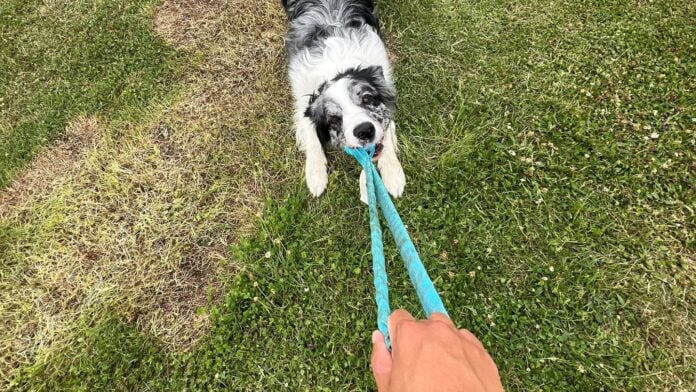Some dogs possess an extraordinary ability to categorize toys not by their appearance, but by how they are used during play. New research reveals that these “gifted word learners” can even apply these categories to new toys, demonstrating a level of cognitive flexibility previously unappreciated in animals. This isn’t simple memorization; it’s an ability to infer and apply functional labels based purely on context.
The Experiment: Play-Based Categorization
Researchers at Eötvös Loránd University in Hungary investigated whether dogs could classify toys based on use rather than physical traits. The study involved 11 dogs known for their extensive vocabulary of toy names, most notably border collies. Owners engaged their dogs in games of either “pull” (tug-of-war) or “throw” (fetch) with a variety of toys. The key element was that toys were assigned to a category randomly, meaning a rope could be designated a “throw” toy just as easily as a plushie.
The process continued until the dogs consistently associated each toy with its designated activity. Then, the dogs were presented with new toys and asked to “bring me a pull” or “bring me a throw,” without the owners vocalizing the categories. The results were striking: dogs correctly identified the category of a new toy in 31 out of 48 trials, despite never having heard the label applied to that specific item.
Implications for Animal Cognition
This study stands out for its naturalistic setting. Unlike previous research conducted in labs with formal training, this experiment took place in the dogs’ homes during regular play sessions with their owners. This approach minimizes the influence of external cues and focuses on the dogs’ ability to learn through social interaction.
The findings suggest that dogs aren’t simply memorizing labels but actively inferring functional categories based on context. As evolutionary anthropologist Vanessa Woods of Duke University notes, this demonstrates a level of cognitive sophistication that was previously underestimated. The dogs were able to categorize by use, not by appearance, showing that they could generalize labels to new objects without any explicit training.
Future Research
Researchers plan to investigate what other mental categories dogs can learn and explore the underlying brain activity involved. The ability to categorize by use could be just one example of a broader cognitive capacity. The findings from this study provide a valuable framework for future investigations into animal intelligence and the evolution of complex thought processes.
The study’s lead researcher, Claudia Fugazza, describes these gifted word learners as “ambassadors to understanding dog cognition.” While not all dogs may possess this skill, the findings suggest that the cognitive potential of canines is far greater than previously assumed.
Ultimately, this research highlights the remarkable ability of dogs to learn, adapt, and categorize the world around them, demonstrating a level of cognitive flexibility that continues to surprise and challenge our understanding of animal intelligence





























